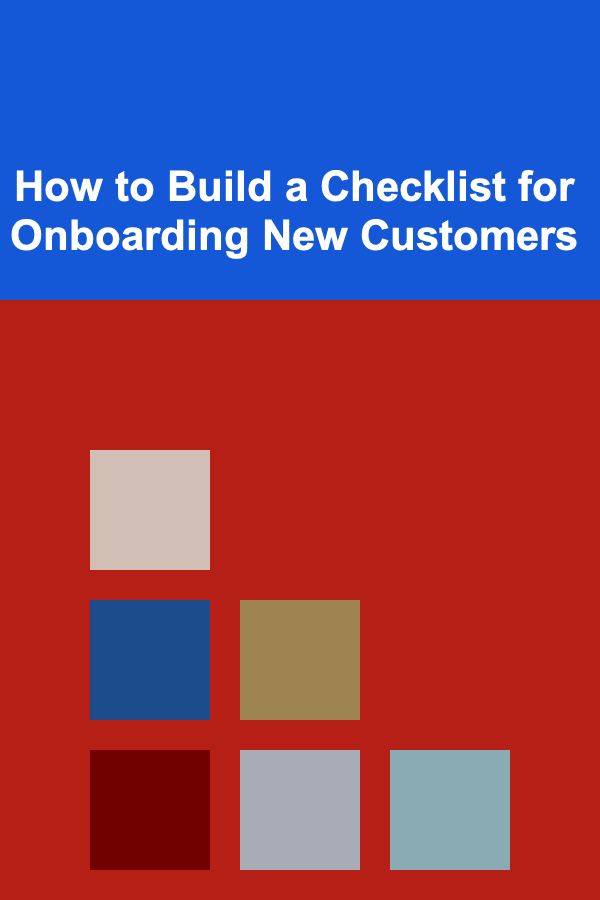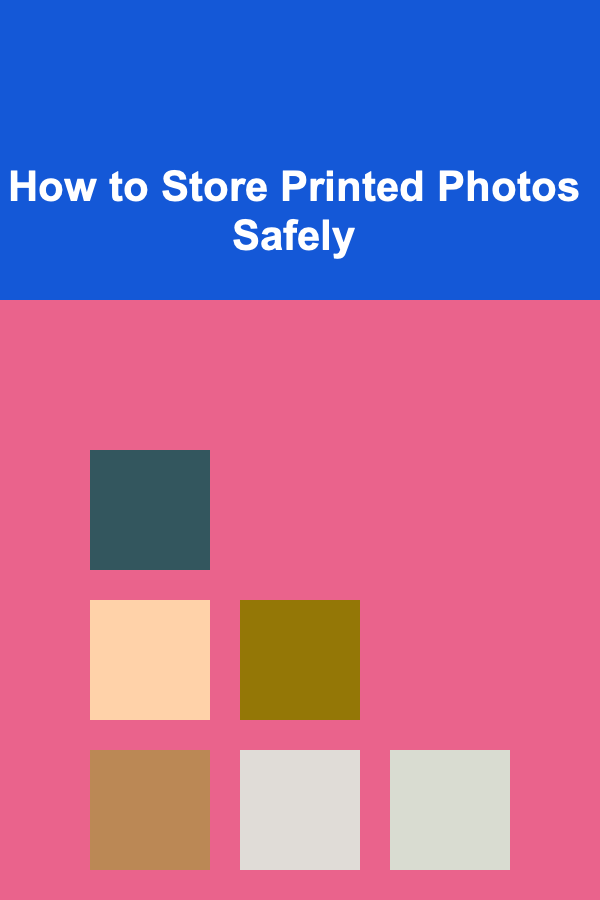
How to Use Gamification for Productivity
ebook include PDF & Audio bundle (Micro Guide)
$12.99$9.99
Limited Time Offer! Order within the next:

In recent years, gamification has emerged as a popular and innovative strategy in both personal development and organizational growth. It draws on the fundamental principles of game design---competition, rewards, progress tracking, and achievement---to motivate and enhance human behavior. When applied to productivity, gamification can significantly improve how we approach tasks, overcome procrastination, and stay focused. This article explores how gamification can be effectively utilized for productivity enhancement, from understanding its core principles to implementing it in various environments.
What Is Gamification?
Gamification refers to the use of game design elements in non-game contexts to engage and motivate people to achieve specific goals. It involves incorporating aspects like scoring systems, points, levels, badges, leaderboards, and challenges into everyday activities. These elements tap into our intrinsic and extrinsic motivations---making tasks more enjoyable, rewarding, and engaging.
At its core, gamification takes advantage of basic psychological principles that games have mastered over the years: goal-setting, instant feedback, mastery, social interaction, and progress tracking. The idea is to make mundane tasks feel more like a game, encouraging people to put in more effort and work harder toward achieving their goals.
The Psychology Behind Gamification
To understand how gamification can boost productivity, it's essential to look at the psychological mechanisms at play. Several psychological theories help explain why gamification can be so effective:
1. Behavioral Motivation Theory
Behavioral motivation theory, particularly the work of B.F. Skinner, suggests that rewards and punishments shape human behavior. In a gamified system, rewards (like points, badges, or achievements) are given when specific behaviors are exhibited, reinforcing the desired behavior. This is similar to how players are rewarded for completing missions or reaching milestones in video games.
2. Self-Determination Theory
Self-Determination Theory (SDT), developed by psychologists Edward Deci and Richard Ryan, posits that people are motivated by three fundamental psychological needs: autonomy, competence, and relatedness. Gamification fulfills these needs by allowing individuals to have control over their tasks (autonomy), providing opportunities to improve and achieve mastery (competence), and offering social interaction through leaderboards or collaborative challenges (relatedness).
3. The Flow State
In his work on the psychology of optimal experience, Mihaly Csikszentmihalyi identified the concept of "flow," a mental state where individuals are completely immersed in an activity, experiencing deep focus and enjoyment. Gamified systems are designed to induce this flow state by offering challenges that are neither too easy nor too difficult, ensuring that individuals remain engaged without becoming overwhelmed or bored.
4. Instant Feedback and Rewards
One of the most attractive features of games is the immediate feedback provided through visual and auditory cues. This quick gratification motivates players to continue progressing. When applied to productivity, providing instant feedback---whether through digital apps, task management tools, or visual progress trackers---helps individuals stay engaged and reinforces positive behaviors in real-time.
How Gamification Enhances Productivity
By tapping into these psychological principles, gamification offers several distinct advantages in the realm of productivity. Let's break down some of the ways gamification enhances productivity and motivation:
1. Increased Engagement and Focus
Traditional task management often involves long lists of to-dos, which can become monotonous and demotivating. By gamifying these tasks, people experience increased engagement, making them more likely to complete the task with enthusiasm. Tasks become challenges that require attention and effort, and the rewards they receive after completing those tasks offer a sense of accomplishment.
2. Breaking Down Large Tasks into Manageable Chunks
Big projects often lead to procrastination due to the overwhelming nature of the task. Gamification helps by breaking down these large tasks into smaller, more manageable pieces. Each of these smaller tasks can become a level, challenge, or objective in the gamified system. Completing each "level" brings a sense of achievement and motivates individuals to continue progressing.
3. Building Positive Habits
Gamification's reward structure can help build positive habits over time. Just like in games where players gradually increase their skill level or unlock new abilities, individuals can use gamified systems to build small habits that eventually lead to larger changes in behavior. Habit-tracking apps like Habitica or Streaks turn the process of habit formation into a game, rewarding consistent progress and encouraging people to stay on track.
4. Providing Social Motivation
Gamification can also include a social element by allowing users to share their progress, compete with peers, or collaborate on challenges. This creates a sense of accountability and camaraderie that pushes people to do their best. Leaderboards, group challenges, or social sharing tools allow individuals to compare their progress with others, which can further drive motivation.
5. Creating a Sense of Achievement and Recognition
People are often more motivated when they are recognized for their accomplishments. Gamification can provide regular acknowledgment through badges, trophies, or points that signify progress and mastery. This boosts self-esteem and reinforces the positive behaviors that led to the achievement. Additionally, the system can include higher levels or more complex challenges, ensuring that individuals continue to strive for success.
6. Gamification for Immediate Gratification
One reason people procrastinate is due to the delayed gratification of long-term goals. Gamification provides immediate rewards that satisfy the human desire for quick results. Whether it's unlocking a new level or earning points for completing tasks, gamification satisfies the need for instant rewards, which can help reduce procrastination and increase motivation.
Practical Ways to Implement Gamification for Productivity
Implementing gamification for productivity doesn't require complex tools or a big budget. Here are some practical and simple ways to gamify your daily tasks, whether in a personal or organizational context.
1. Use Task Management Apps with Gamification Features
Many productivity apps incorporate gamification elements to keep you engaged while completing tasks. Popular task management tools like Todoist , Trello , and Microsoft To Do allow you to set goals, track your progress, and visualize your completion rates. Apps like Habitica are even more game-oriented, offering points, badges, and rewards for completing daily tasks.
2. Create Personal Challenges
One simple way to gamify your work is by creating personal challenges. For example, set a goal to finish a task within a specific time frame and treat it like a game with a countdown timer. You can also create a reward system, where completing certain tasks unlocks a reward, like a break, a treat, or something you enjoy.
3. Incorporate Points and Levels
Assign points to different tasks based on their difficulty or importance. For example, easier tasks may be worth fewer points, while more complex or significant tasks might yield more points. Set goals for reaching a certain number of points or leveling up, which adds a competitive element to your day.
4. Establish a Reward System
Rewards can significantly increase motivation. You can create a system where you earn small rewards for completing tasks, like taking a short break, eating a snack, or watching a favorite show. You can also aim for larger rewards once you complete a series of tasks or reach certain milestones.
5. Create a Social Element
If you're working on a team, incorporating social gamification features can be a huge motivator. Create a shared leaderboard or engage in team challenges. You can also offer small rewards for team achievements or set up collaborative goals where the group works together to unlock rewards.
6. Gamify Routine Tasks
Many people struggle with mundane, routine tasks. However, these tasks can be gamified by adding a competitive edge. For instance, you can track how many days in a row you accomplish certain habits or tasks, rewarding yourself after completing a specific number of consecutive days. Alternatively, you can compete with a friend or colleague to see who can complete certain activities first.
7. Track Progress Visually
Visualization tools can make the experience of gamification even more rewarding. Use charts, graphs, or progress bars to track your achievements. When you can visually see the progression of your efforts, it becomes easier to stay motivated and appreciate the progress you've made.
Challenges and Considerations
While gamification offers many benefits for productivity, it's not without challenges. Overusing gamification or applying it in a way that doesn't align with an individual's goals can lead to burnout, frustration, or lack of engagement. It's important to ensure that the rewards and gamification elements align with personal or organizational values.
Additionally, gamification can sometimes introduce unnecessary competition, leading to stress or unhealthy comparisons between individuals. It's essential to ensure that the system encourages collaboration rather than fostering unhealthy rivalry.
Conclusion
Gamification has the potential to revolutionize how we approach productivity by making tasks more engaging, rewarding, and motivational. By leveraging game mechanics---such as points, levels, rewards, and challenges---individuals can cultivate better habits, stay focused, and achieve their goals. Whether you are an individual looking to improve personal efficiency or a business aiming to increase employee engagement, gamification offers a fun and effective solution for boosting productivity.
Incorporating gamification into your productivity routine can transform mundane tasks into exciting challenges, increase motivation through rewards, and provide valuable feedback. With the right balance, gamification can help people achieve greater success while enjoying the process along the way.

How to Build a Checklist for Onboarding New Customers
Read More
How to Build an Emergency Fund in 6 Months
Read More
How to Ensure Safety and Security During Your Yard Sale
Read More
How to Invest in a Vanguard Personal Pension for Long-Term Growth
Read More
How to Prepare for Extreme Weather Conditions
Read More
How to Store Printed Photos Safely
Read MoreOther Products

How to Build a Checklist for Onboarding New Customers
Read More
How to Build an Emergency Fund in 6 Months
Read More
How to Ensure Safety and Security During Your Yard Sale
Read More
How to Invest in a Vanguard Personal Pension for Long-Term Growth
Read More
How to Prepare for Extreme Weather Conditions
Read More